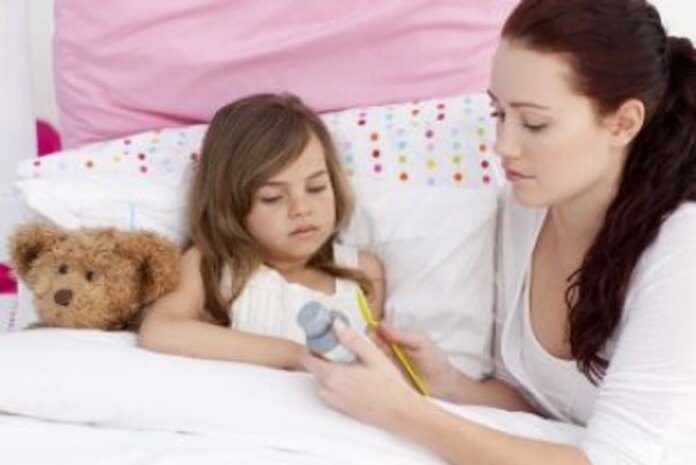
The most common diseases in children: anemia
If your little one is lethargic, pale and gets sick easily, he may be anemic. The condition involves a too small number of red blood cells in the blood. Insufficient assimilation of iron, frequent health problems, but also too fast growth can lead to the appearance of this problem.
To treat anemia, parents can introduce into the child’s diet chicken or beef liver, vegetables rich in iron (spinach, broccoli), beans, brown rice, eggs, but also fruits (pineapple, figs, grapes, blackberries, pears, apples). Medicinal treatment can be resorted to only upon the indication of the pediatrician.
The most common diseases in children: bedwetting
Known in medical terms as nocturnal enuresis, the problem is involuntary urination during sleep in children who control their bladder while awake. Most of the time, the discomfort appears until the age of 6-7 years and affects approximately 15% of children.
To get rid of this problem, parents can help their little ones to have more bladder control, and this can be done by making more visits to the bathroom, especially before the little one goes to bed. If the problem is associated with kidney problems, the pediatrician can recommend the necessary treatment.
The most common diseases in children: mumps
This childhood disease is caused by a virus, paramyxovirus to be precise, which causes swelling of the salivary glands. Among the most common symptoms of this problem are earaches, fever and headaches.
As it is a contagious disease, it is good to know that the little one must stay at home in order not to make other children sick. The condition goes away on its own, but it is important for the parent to notice if some complications arise and ask for the guidance of the pediatrician.
The most common diseases in children: rubella
Most episodes of rubella, also known as measles (manifested by the appearance of small pink spots on the skin), are recorded in winter and spring. Like most contagious childhood diseases, rubella is transmitted through direct contact with the infected person and through the air.
Symptoms of rubella include headache, neck pain, fever, swollen lymph nodes. It is recommended that the little one stay at home for a week, during which he will be given paracetamol if pain occurs. It is essential throughout this period that he be properly hydrated (water, soups, compotes).
The most common diseases in children: measles
Popularly known as measles, measles is one of the diseases specific to childhood. The infection is transmitted through the respiratory tract and through contact with contaminated objects. The diagnosis is made with the help of a blood test that shows the presence of antibodies against the measles virus (IgM).
Measles often starts with a high fever, and the child may have muscle pain, hoarseness and sore throat. At most 4 days after the onset of the disease, the rash appears, first behind the ears, then spreading to the face, neck, and trunk.
The lumps are red, of variable size (they can be at most 3 cm), slightly raised. It is recommended that the little one stay at home for 10 days. The parent can give him paracetamol and ibuprofen in case of fever (dose to be determined by the pediatrician).
The most common diseases in children: chicken pox
Chickenpox or chickenpox is another disease that is easily transmitted among children. The virus is transmitted very easily, through cough drops, sneezes and saliva, through contaminated objects and through direct contact with the fluid-filled vesicles specific to the disease.
About 2 weeks after contact with the sick person, the symptoms of chicken pox begin to appear. At this stage, the disease has symptoms similar to those of the virus: fever, nasal secretions, lack of appetite and slight sore throat. Chickenpox has no specific treatment.
If a fever occurs, the child will be given paracetamol or ibuprofen. The little one’s room must be ventilated, and his clothes should be loose.
The most common diseases in children: scarlet fever
Children between the ages of 5 and 10 have a high risk of suffering from scarlet fever, a condition that is transmitted through sneezing, coughing, nasal secretions, through contact with contaminated objects (toys). The diagnosis of scarlet fever is made with the help of analyzes such as the pharyngeal exudate.
The disease is manifested by fever, headache, inflammation of the throat and tonsils, alteration of the general condition and sometimes by vomiting. After 1-2 days, the red rash appears, rough to the touch and itchy for the child.
The child with scarlet fever generally needs to be hospitalized for a week. Treatment with antibiotics (penicillin) is needed, the therapy continuing even after discharge.
The most common diseases in children: enterocolitis
Disease of the digestive tract, enterocolitis appears suddenly in children who come into contact with people who have this health problem or touch already contaminated objects. The condition is manifested by loose stools, dehydration or vomiting.
In addition to proper hygiene measures (hand washing, frequent showers), parents must also pay attention to the child’s diet.
He must eat little and often, consume fresh fruits and vegetables (well washed and carefully prepared) and avoid semi-prepared foods or those stored in improper conditions.
The most common diseases in children: cold
Especially during the cold season or when entering the collective, the little ones catch cold quite often. It is important that the parent does not resort to medical treatment, especially antibiotics, from the first moments.
If the specific cold symptoms are getting stronger, it is very important that the little one is consulted by a pediatrician. This can indicate the treatment needed to treat the problem.






































